Contents
It is hard to believe that the many peanut health benefits, mainly for the skin, come from a plant’s fruit that develops underground—however, this is the case with the peanut. When the flower’s ovary is fertilized, it goes underground, growing to maturity. For this reason, some think the peanut is a root or a tuber. However, it is an underground fruit. The peanut is a legume, and as happens with this botanical family, the fruit is a pod in which seeds, the edible portion, grow.
Peanuts were staples in the diet of native peoples of Central America before the arrival of the Europeans. Although some historians place their origin in Brazil and others in East Asia, Caribbean natives inevitably cultivated peanuts in the remote past. Today peanuts are one of the most widespread oil-bearing nuts because of their taste and nutritional properties.
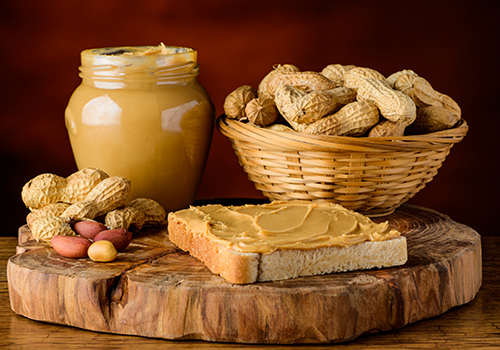
Peanut Nutritional Facts
Peanuts are a highly nutritious food whose nutrient concentrations surpass animal-based food, including meat. Within the vegetable kingdom, only the almond and the walnut can compare with it in nutritional value. Peanuts conspicuously exceed meat and eggs in carbohydrates, fats, proteins, vitamins B1, C, E, and niacin. They are also superior in calcium, magnesium, and potassium minerals. And all this without cholesterol or excess saturated fatty acids.
Peanuts certainly are one of the most concentrated foods available. Some foods, such as honey or oil, surpass peanuts in particular nutrients (carbohydrates and fats, respectively). However, only oil-bearing nuts, particularly peanuts, contain all the essential nutrients in high concentrations.
This demonstrates just how appropriate they are from a nutritional standpoint. They are not a simple snack or a complement to other foods. If peanuts’ caloric content is ignored and they are added to the regular diet, one runs the risk of the consequences of obesity. Stomach discomfort and indigestion result from quickly eating peanuts and not chewing and salivating them properly.
People who eat peanuts without regard for the fact that they are such concentrated and nutritious food tend to complain that they are indigestible. If eaten in moderation, using them to replace other foods rather than complement them is well tolerated and easily assimilated. The following is a detailed review of the peanut’s nutrient properties:
Proteins – Peanut proteins, which can reach twenty-six percent of their weight in some varieties (meat never surpasses twenty percent), are relatively poor in the amino acids methionine, lysine, and threonine. As a result, to supply all necessary amino acids required to produce complete proteins, peanuts should be eaten with other foods such as:
- Whole grains (very rich in methionine)
- Legumes (rich in lysine and threonine) or with
- Brewer’s yeast (rich in methionine and threonine).
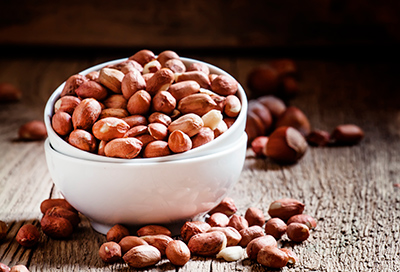
Fats – Fats constitute almost half the peanut’s weight and can be extracted as oil. They are formed of a balanced combination of polyunsaturated, monounsaturated, and saturated fatty acids, saturated being the least abundant. Peanuts contain a significant share of the essential unsaturated linolenic and linolenic fatty acids the body cannot produce, which must be supplied in the diet. FATTY ACIDS are vital in forming and restoring the skin and brain tissue. They are also involved in the immune system and heart metabolism since they are the primary energy source for the heart muscle.
In the same way, the brain needs glucose to maintain its activity; the heart “burns” fatty acids to obtain the energy necessary for its beats.
Carbohydrates – Peanuts contain many carbs, mainly starch and maltose. This explains why it is important to chew and drool them well so the ptyalin in the saliva can initiate their digestion. If they come into the colon without adequately digested, in other words, not having been completely transformed into glucose, they produce fermentation and intestinal gas.
Vitamins—Peanuts contain a certain amount of B-complex vitamins (B1, B2, and B6) and vitamins A and C.
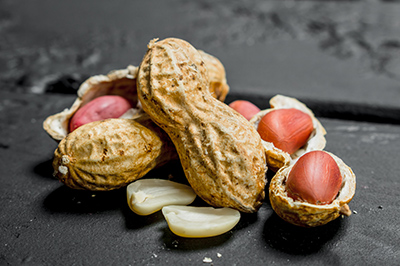
Their vitamin E content is noteworthy, less than sunflower seeds, walnuts, or almonds, but much more significant than butter or eggs, the richest animal sources of this vitamin. However, peanuts reach an actual record among foods in their niacin content.
NIACIN, also known as vitamin B6, acts as a coenzyme within the body that facilitates the numerous chemical reactions essential to carbohydrate and fat metabolism, allowing these nutrients to provide energy to the cells. Lack of niacin manifests as dry, cracked, red skin, muscular weakness, and dyspepsia. Severe niacin deficiency produces a disease known as pellagra, characterized by the so-called 3 D’s: dermatitis, diarrhea, and dementia.
Minerals – Peanuts are rich in potassium and low in sodium, assuming no salt has been added. They also contain significant phosphorus, calcium, magnesium, and iron. They are an excellent source of trace elements such as zinc, copper, and manganese, having even more than meat and fish.
Vegetable fiber – Peanuts are relatively poor in cellulose carbohydrates and, as a result, can cause constipation if a large amount is eaten at once and without being accompanied by fruit or whole grains.
Peanut Health Benefits
The rich nutrient compositions explain the following peanut health benefits:
1. Peanut health benefits (Skin conditions)—Regular peanut consumption promotes good health for the skin and mucosa thanks to its high levels of unsaturated fatty acids and niacin. Both substances are essential for skin cell regeneration and health.
2. Peanut health benefits (Cardiac conditions)—Peanuts are highly recommended for heart patients due to their rich essential fatty acid content. These fatty acids are vital energy sources for the heart’s cells. They also help lower cholesterol levels, thus improving blood circulation in the coronary arteries.
Peanuts are low in sodium and high in potassium, which protects against hypertension and fluid retention in the tissues. Again, these benefits assume that the peanuts are unsalted.
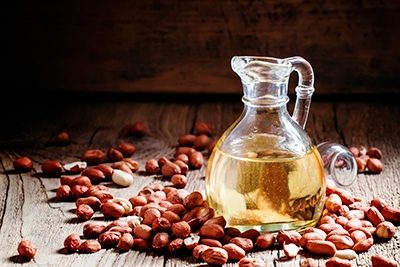
Peanut Oil
Cold-pressed peanut oil (first and second extraction) is clear, fluid, and flavored. Peanut oils that are not fluid should be rejected since this indicates that the unsaturated fatty acids have become saturated (hydrogenated) and thus lost their dietetic interest.
As a kitchen oil, it is used extensively for frying since it does not smoke until the temperature is very high. This allows frying at very high temperatures without the decomposition of the oil. Peanut oil is very rich in unsaturated fatty acids. It is highly recommended orally or as a lotion on the skin in cases of eczema, dry skin, or dermatitis in general.
Peanut Scientific Facts
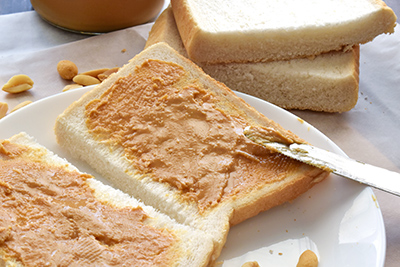
- Scientific name – Arachis hypogea L.
- Other names – Groundnut, earthnut, goober [pea], runner peanut, Spanish peanut, mani.
- French – Cacahuéte.
- Spanish – Cacahuete, cacahuate, mani
- German – Erdnuss
- Description – Seeds of the subterranean fruit of the peanut plant and annual herbaceous plant of the botanical family Leguminosae measuring 11.81 inches to 15.75 inches in height.
- Environment – Widely cultivated in tropical and subtropical regions throughout the world.
How to Use and Prepare Peanuts
- Roasted – It is usually enough to roast peanuts five to ten minutes after they have been shelled; fourteen to twenty minutes if not. Ideally, salt should not be added.
- Fried in oil – Fried peanuts are delicious, if somewhat indigestible.
- Raw – Raw peanuts are difficult to digest, and some varieties have an unpleasant flavor.
- Peanut butter – This is made by lightly roasting and grinding peanuts to a homogenous paste. This highly concentrated and nutritious product may be profitably substituted for dairy butter.
- Peanut flour – This is rich in protein, and in some countries, it is mixed with wheat flour to produce highly nutritious bread and other baked goods.
DISCLAIMER: All content on this website is presented solely for educational and informational objectives. Do not rely on the information provided as a replacement for advice, diagnosis, or treatment from a qualified medical expert. If you are pregnant, nursing, or have any preexisting medical concerns, talk to your doctor before using any herbal or natural medicines.
REFERENCES
- George D. Pamplona-Roger, M.D. “Encyclopedia of Foods and Their Healing Power.” George D. Pamplona-Roger, M.D. Encyclopedia of Foods and Their Healing Power. Trans. Annette Melgosa. Vol. 2. Chai Wan: Editorial Safeliz, 2005. 336, 337, 338. Print. [Peanut health benefits]
- Healthline: https://www.healthline.com/nutrition/peanuts
- WebMD: https://www.webmd.com/diet/health-benefits-peanuts
- Medical News Today: https://www.medicalnewstoday.com/articles/325003
- EatingWell: https://www.eatingwell.com/article/7960613/are-peanuts-healthy
- Peanut Institute: https://peanut-institute.com/about-peanuts/good-for-every-body
Last update on 2025-06-04 / Affiliate links / Images from Amazon Product Advertising API





